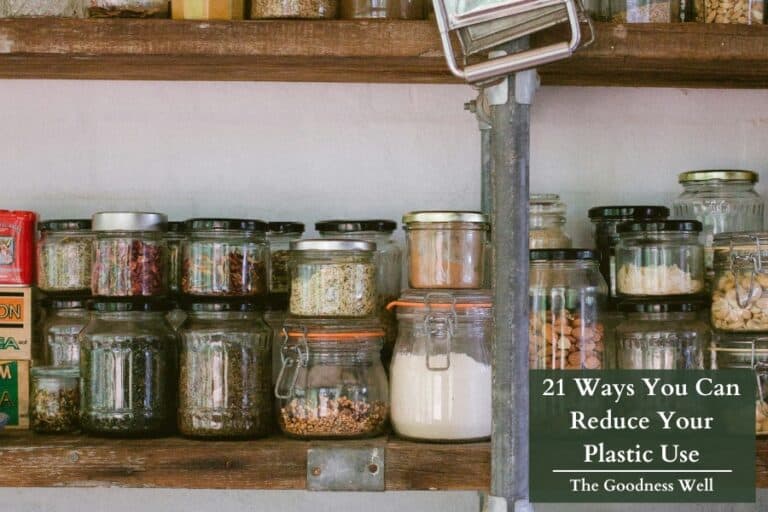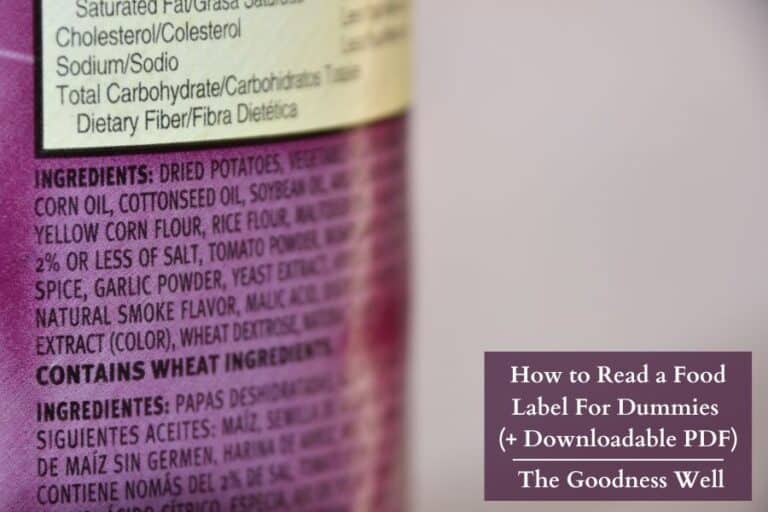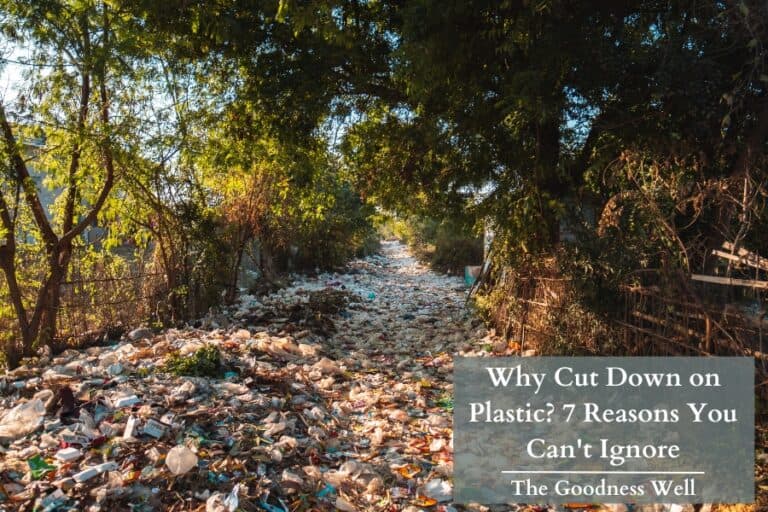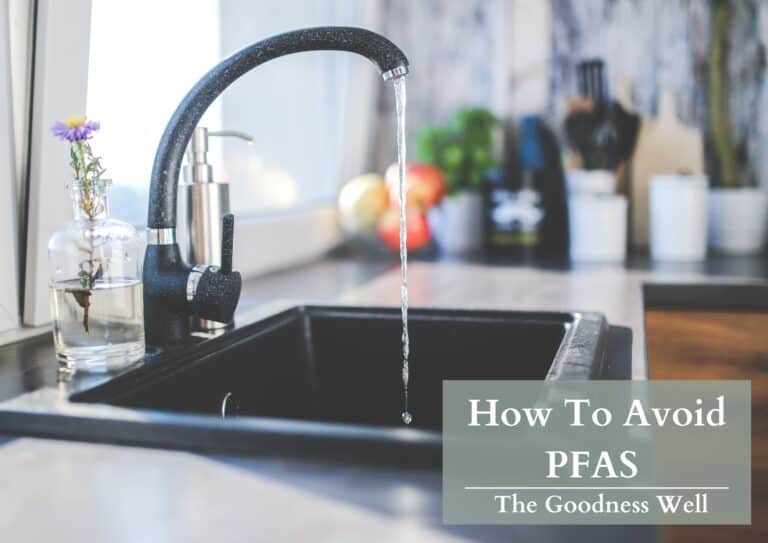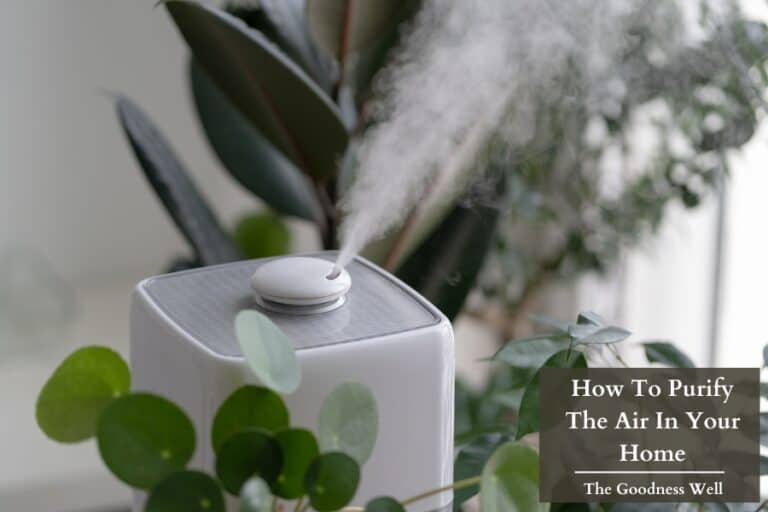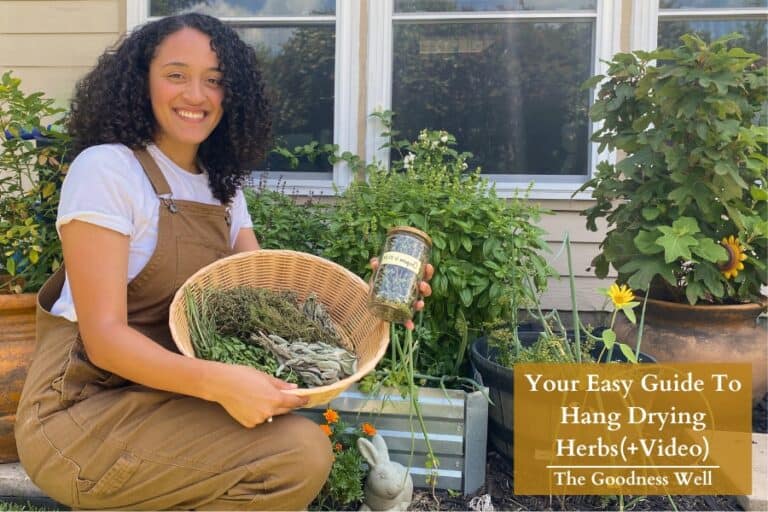How To Avoid Phthalates: 7 Practical Tips
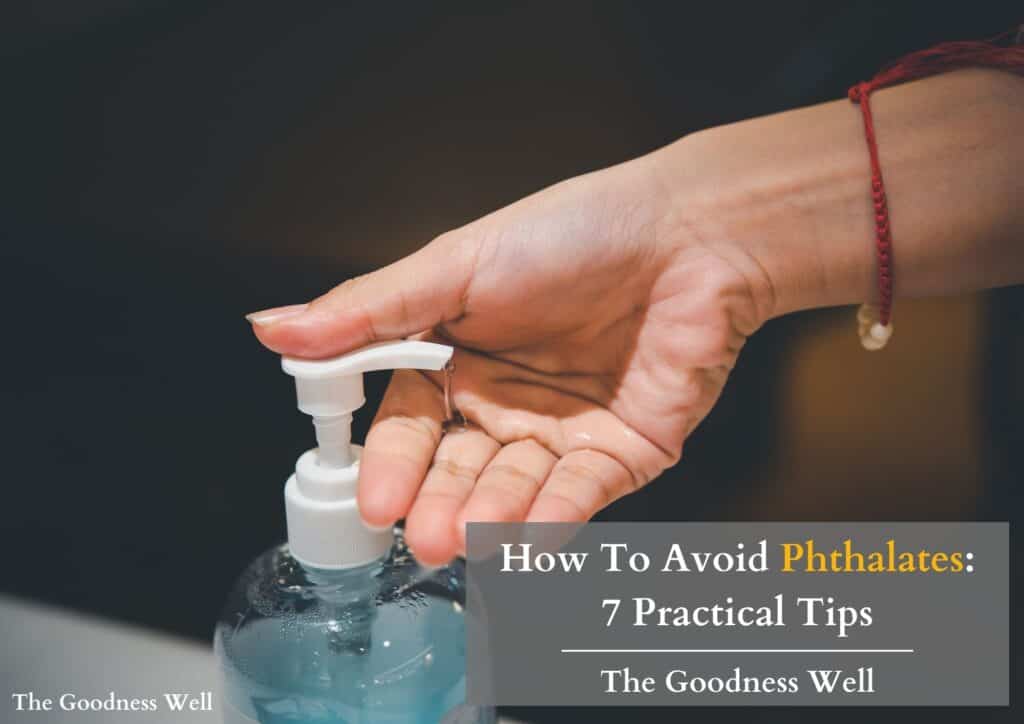
In our other article we talked all about phthalates, those hidden toxic chemicals that are pretty much everywhere, and not great for our health or the environment.
Now, through some simple tips and tricks we’ve learned, we put together this guide to help you avoid these nasty chemicals.
Let’s get into it!
TL;DR
How To Avoid Phthalates:
- Read Your Labels/Avoid Fragrance
- Avoid Processed & Packaged Food
- Use Non-Toxic Food Containers
- Avoid Plastic #3
- Choose Natural & Organic Materials
- Be Cautious With Older Products
- Invest in an Air Purifier
How to Avoid Phthalates (7 Tips)
To be truthful, it’s difficult to completely eliminate phthalates from our lives. It seems like everything has these hidden chemicals in it.
Don’t worry though, it’s not as tough to avoid them as you might think.
These tips are some simple ways we have adopted to live a more chemical-free life.
1. Read Your Labels/Avoid Fragrance
These chemicals are actually in a lot of cosmetics! Once we started paying attention to labels, it really opened our eyes.
Phthalates mostly hide behind vague terms like “fragrance”, which contain many toxic chemicals that companies aren’t even required to list in the ingredients.
Yeah, not cool.
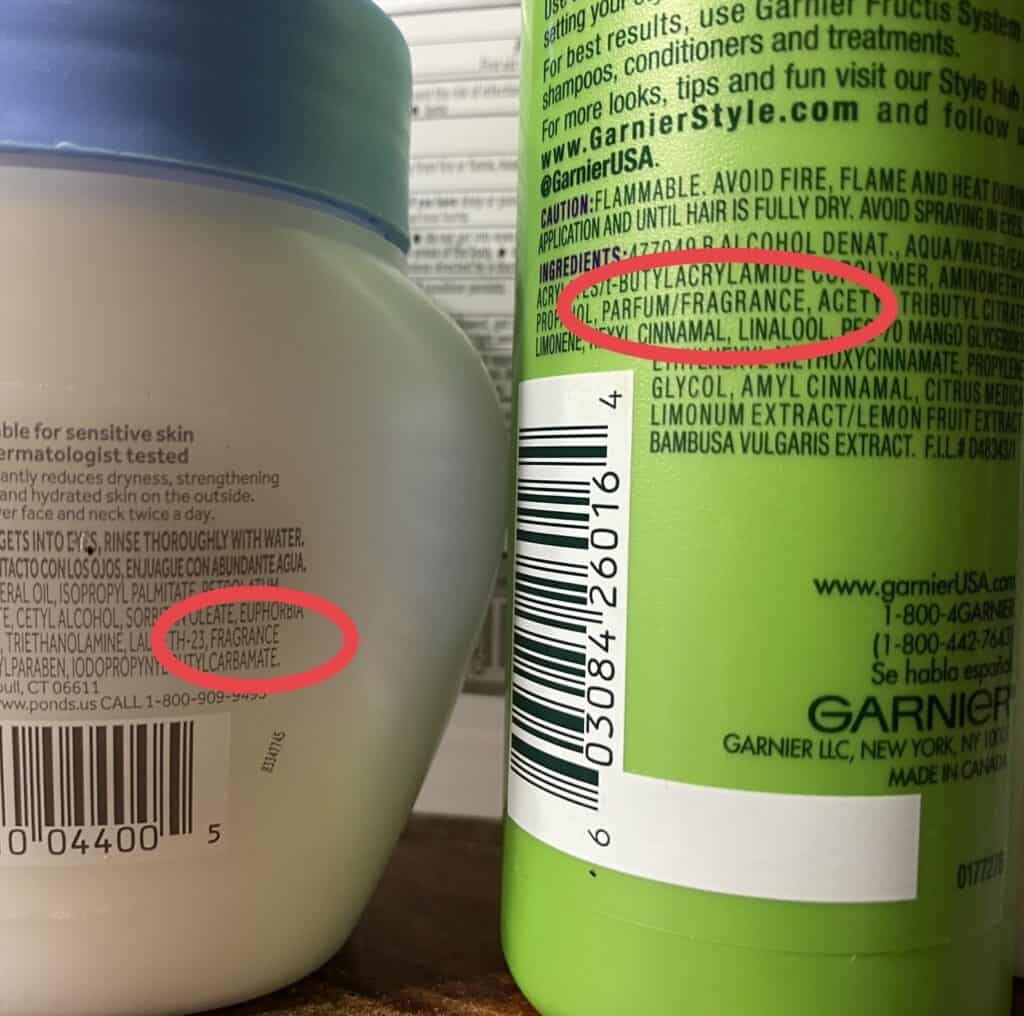
Look for non-toxic products labeled “phthalate-free” or “fragrance-free,” and avoid products that contain ingredients such as “fragrance”, “perfume”, or “parfum,” which may contain hidden phthalates.
We use apps like Clearya to check if a product has any harmful chemicals in it.
Also, avoid the following ingredients in products:
- DINP (diisononyl phthalate)
- DEP (diethyl phthalate)
- DBP (dibutyl phthalate)
- DEHP (di-2-ethylhexyl phthalate)
- BBP (benzyl butyl phthalate)
- DNOP (di-n-octyl phthalate)
- DMP (dimethyl phthalate)
- DIDP (diisodecyl phthalate)
Oh, and for cleaning products, choose EWG-verified cleaning products or make your own toxic-free cleaners!
2. Avoid Certain Foods
Once we learned that it’s not just the food we eat, it’s also what it comes packaged in, it really opened our eyes.
A quick recap from our other article on phthalates in food:
- Poultry is #1 for phthalate contamination
- Dairy is high in phthalates due to the tubing used to milk cows
- Phthalates are lipophilic, so they leach into fatty foods much easier than other foods
- Anything that is wrapped in plastic or packaging is at risk for phthalate contamination
- Heat will speed up the release of phthalates from packaging into food
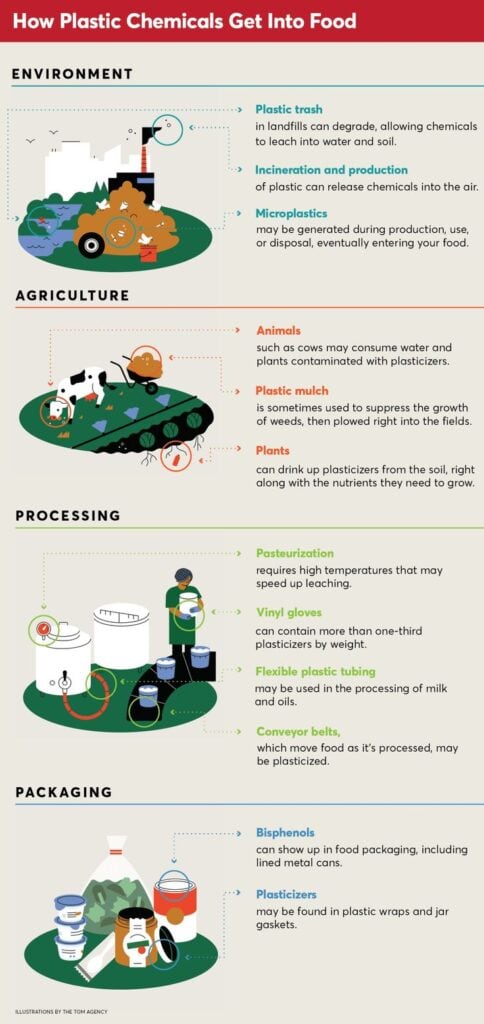
How to Limit Phthalates in Food:
- Avoid highly processed or packaged foods
- Avoid food from cafeterias and restaurants (especially fast food)
- Avoid dairy. Choose dairy-free alternatives
- Choose fresh or frozen meats over those packaged in plastic
- Trim excess fats from meats
- Consume fresh, organic, and locally sourced foods that are free of packaging
- Choose products in glass jars over plastic
- Cook in nontoxic cookware
3. Use Non-Toxic Food Containers
Many cheap plastic food containers can also contain BPA (or its alternatives BPS and BPF which are just as toxic). Not to mention, all plastics leach microplastics into our food. Yikes.
We use glass, silicone, or stainless steel for food storage as they don’t leach any chemicals.
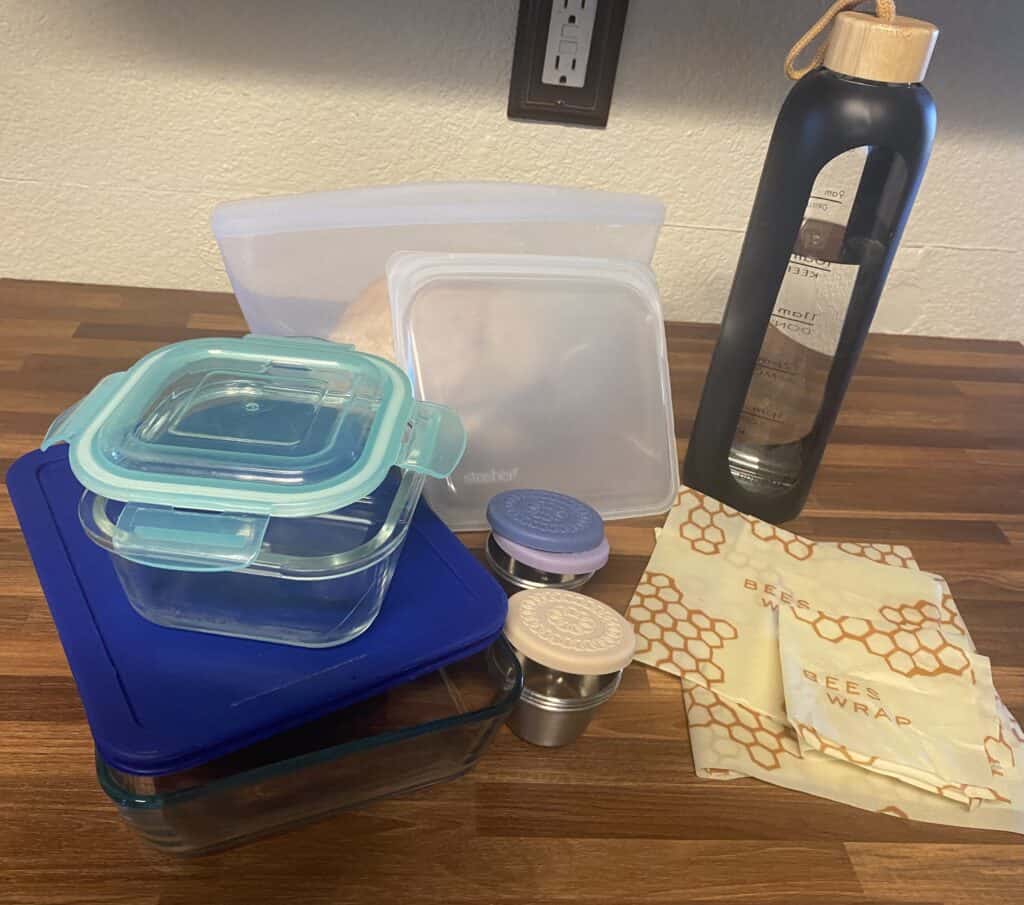
Also, do not microwave plastic food containers (as it can cause chemicals to leech into your food) or put them in the dishwasher.
4. Avoid Plastic #3
Another reason to avoid plastic. Plastic products labeled with the number 3 are made from polyvinyl chloride (PVC), which usually contains phthalates to make it flexible.
Plastic #3 is usually found in:
- Plastic tubing
- Food packaging
- Cleaning bottles
- Plastic Trays
- Cheap kids toys
To identify PVC, just look for the number 3 within the universal recycling symbol on whatever plastic you’re using. It’ll look like the symbol below.
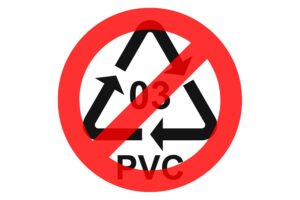
Avoiding plastic #3 is a great start but your best bet is to avoid all plastic.
5. Choose Natural and Organic Materials
Choosing natural and organic materials can protect you from more than just phthalates.
You’d be surprised at all the toxic chemicals companies put in their products (including our food!) that you aren’t aware of.
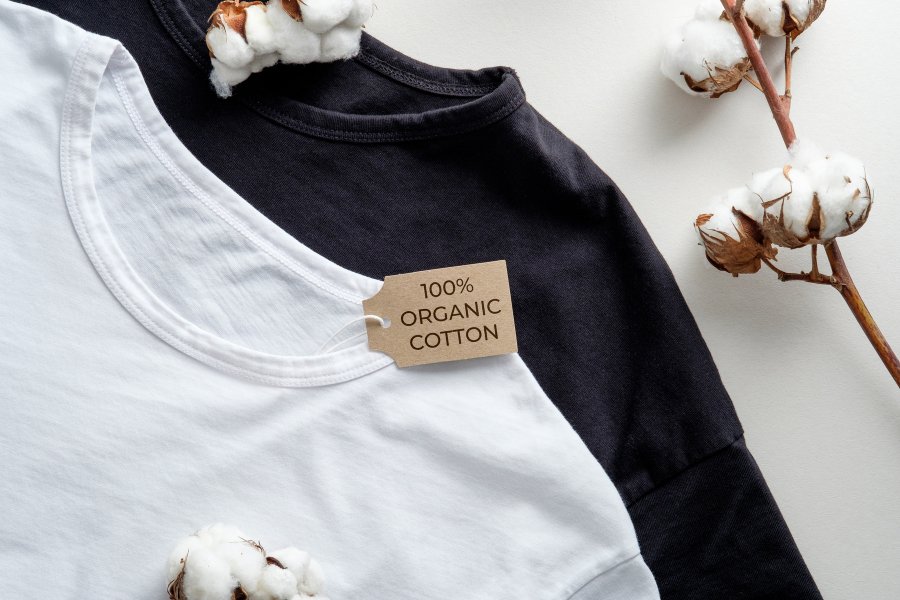
Phthalates can be in home products such as:
- Personal Care Products
- Kitchenware
- Furniture
- Clothing & Bedding
- Raincoats and other waterproof clothing
Benefits: Choosing these kinds of materials not only reduces phthalate exposure but also supports healthier living and a cleaner planet.
We have many posts covering non toxic alternatives to items like the ones above.
6. Be Cautious With Older Products
Companies are becoming more conscious, but many products out there still contain phthalates, especially older ones.
It’s especially important to be cautious with items that young children might chew on. The same goes for older vinyl items in the home, such as shower curtains or flooring.
If you have older plastic toys, especially those made before regulations came into effect (2009), they might contain phthalates.
7. Invest in An Air Purifier
Specifically granular activated carbon filters are designed to trap airborne pollutants, including volatile organic compounds like phthalates.
These filters absorb the phthalates, preventing them from circulating in your indoor air.
When looking for an air purifier, be sure it includes an activated carbon filter.
That’s all folks!
In our journey to live as naturally as possible, we know it’s tough to limit these kinds of chemicals around you but with these tips, you should be able to reduce your exposure to phthalates by a bunch.
Even if you aren’t perfect at practicing them, being aware and making a few better decisions is all progress.
Thanks for reading!

